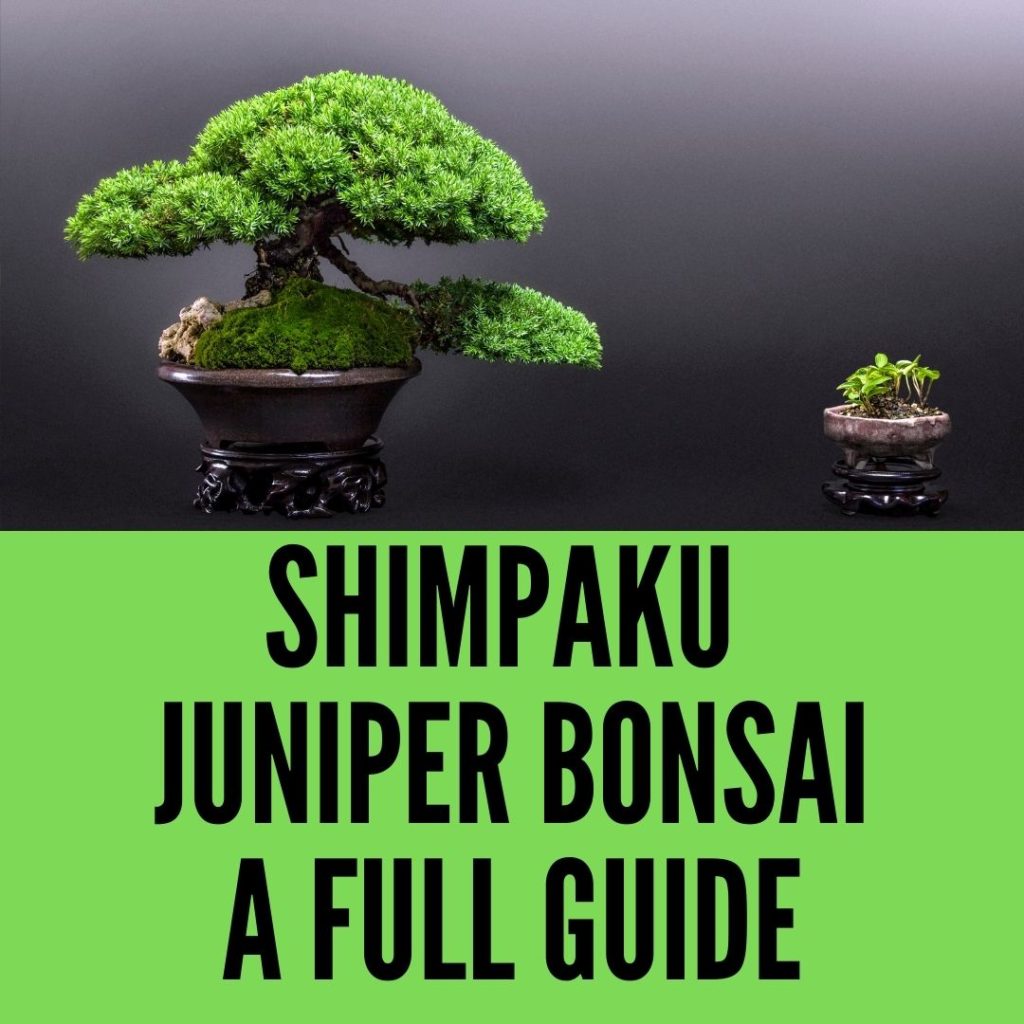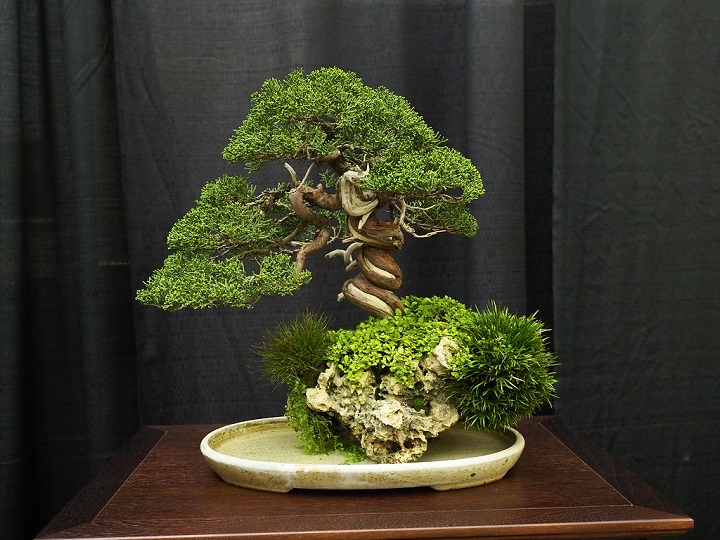In the bonsai world, every bonsai tree has a rich history. The shimpaku juniper bonsai is not different. The word ‘Shimpaku’ is a bonsai-specific word and is not used outside the bonsai community, even in Japan. The word is written with two kanji, shin, and haku. Shin in Japanese means authentic and haku means cypress.
So, it basically means authentic cypress or pure cypress. The term is used to describe juniper trees that are found from north Japan to South Japan. It is an umbrella term that even includes American or European junipers.
The Japanese people will call American Rocky mountain junipers, Roki Shimpaku if they are shown one. Therefore the word is not limited to junipers in Japan but it includes all juniper trees.

The History of Shimpaku Bonsai
The shimpaku juniper was very famous in Japan in the early 19th century. There was a phase when they became hard to find in Japan because they were over-collected. The collectors were looking for different kinds of shimpaku in various regions of Japan. A man named Tahei Suzuku, was a renowned collector at that time. In one of his visits to Shikoku island, he found the famous ‘Itoigawa Shimpaku’.
The Itoigawa shimpaku is one of the most well-known shimpaku and possibly the species of shimpaku that made it world-famous. The name came from the town where Tahei Suzuku was selling the plants. Then people started looking for other types of shimpaku in Japan. The Hokkaido shimpaku and the Kishu shimpaku are the results of that search.
All the shimpaku found in Japan are part of the Juniperus Chinensis Sargentii. That is one way to discern Japanese shimpaku. At present, the shimpaku is more sought after in other countries than Japan. Japanese bonsai enthusiasts have moved to different projects but the western communities cannot get enough of these majestic trees.
The Features of Shimpaku Juniper Bonsai
The shimpaku has distinctive features that set it apart from other bonsai trees. The first notable feature is the white dead bark that is cultivated by scratching the bark. The shimpaku has a strong base and the bark does not get damaged from this practice. The whitebark makes it quite pleasant to the eyes.
The other distinct feature is the foliage. The shimpaku foliage is recognizable by everyone in the community. The foliage is scale-like and can have a little shade of gray, dark green, blue, or yellow depending on the shimpaku. The foliage combined with the bark makes up a beautiful bonsai specimen if they are taken care of correctly.
The shimpaku bonsai has to be taken care of for years until it reaches its maximum height. It can take 10 years for a shimpaku to fully grow. So, it is a bonsai that is not for beginners. The bonsai needs to be under constant observation and needs an expert handler.
How to Care for A Shimpaku Juniper Bonsai
Shimpaku bonsai, like all other bonsai, needs constant care. The shimpaku bonsai takes 10 years of time to fully mature its hard resinous wood. That is one of its principal features, also this makes it very suitable for sculpture techniques. The whitebark that is another one of its features is also the result of sculpture techniques
The Watering
The watering process for shimpaku is an important matter. The soil needs to be rocky and somewhere between wet and dry. The wet and dry balance of the soil depends on the watering. The water needs to be applied judging the soil, do not wait for the soil to dry. On the other hand, do not apply too much water and make it muddy. Using your hands is a good way to measure the moisture of the soil.

The soil needs to always have enough moisture. So, if the soil feels dry it is the right time to water the plant. There is another way to check if the plant needs water. Simply raise the pot and see if the weight is low, if it is low then the plant needs water. The bonsai pots are not that big and cannot hold much water. So, the soil and the tree need to be checked regularly.
How Long Does It Take To Grow A Bonsai Tree?
The Displaying
The shimpaku bonsai does well outside. A mature tree can adapt to any season and it needs plenty of sunshine. So, a shimpaku ideally should be kept outside. It needs the sun but in summer it needs afternoon shade. So, remember to provide a balance of sun and shade depending on the season.
Fertilizing
Shimpaku bonsai does need fertilizers but for young trees, it is not recommended. As the soil is very little a bonsai needs fertilizing every month once except in winters. Fertilizers should be used by halving the recommended amount, that is specified on the bag.
Trimming
Trimming is a part of growing a bonsai tree. For shimpaku, pinch the new growth and do not cut it. The trimming should be done according to the growth of the tree. A bonsai enthusiast will know when trimming is necessary but be careful not to overdo it.
Wiring
The wiring is important if you want that twisted elegance of your bonsai. Wiring should not be done on young trees and start from the base then gradually move to the branches. Also do not apply too much force, it might cause a branch to break. While removing the wire simply by cutting them, is the safest approach.
Repotting
Shimpaku bonsai should not be repotted while they are young. Repotting is necessary to provide better soil to the bonsai. It is advised that mature shimpaku are repotted every 2 years.
Conclusion
The shimpaku juniper bonsai is beloved by the bonsai community. Many people interested in bonsai want to collect one for themselves. The shimpaku is very common now and young shimpaku can be found in your nearest Home Depot or in a bonsai garden. It is not very hard to collect them but maintaining them will test your will. However, you should not give up and you will soon see a majestic bonsai in your backyard.
